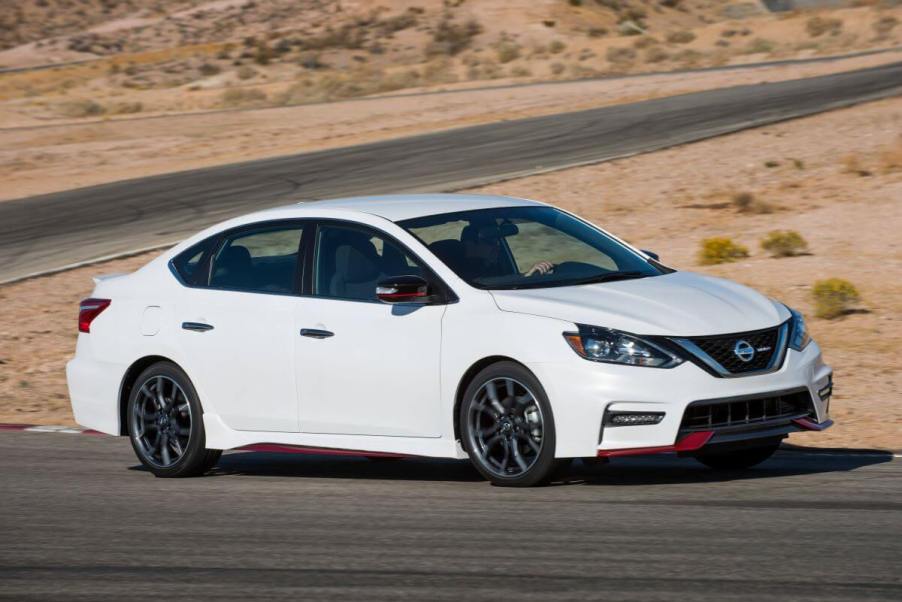
4 Cars With Performance Badges That Are Not Much More Than Cosmetic
Over 20 years ago, performance trims almost always meant getting something special and unique. A Mercedes-Benz with an AMG badge turned a serene luxurious sedan into a raucous German muscle car, a BMW with an M on the back meant you were getting the very best drivers cars BMW had to offer, and the lower trims didn’t suffer from the exclusivity from the performance models. In fact, many people bought a 330i or C300 because of the existence of the M3 and C63.
Many brands today have diluted their performance trims by throwing M, AMG, ST, and V badges on almost any model, regardless of what’s underneath. This isn’t always a bad thing, but when a brand clearly defines a performance badge’s identity, completely ignoring that identity can risk making that badge meaningless. Look at the badges representing the biggest departure from their true identity.
1. Ford Edge ST
The Ford Edge ST is only the third vehicle to carry the ST badge. The cars that defined the brand were the Focus and Fiesta ST. Both the Focus and Fiesta were inexpensive hatchbacks that, though light and tossable, were far from performance-oriented.
The Fiesta’s base 1.6L engine made just 120 horsepower, and the 2.0L Duratec of the Focus made 160 hp. The ST treatment massively increased power to 197 hp in the Fiesta and 252 hp in the Focus. The little hatchbacks also had completely different suspension setups, and the Fiesta even had a brake vectoring system. As practical daily drivers, they were raw, cheap, and tons of fun.
However, the Edge ST is little more than a marketing exercise. Ford is cashing in on the ST name to give the Edge some credibility. The Edge ST isn’t more performance-oriented than other vehicles in its price range and isn’t much more than a warmed-over Edge Sport. Sure, it handles decently for an SUV, but a base BMW X3 starts at $200 cheaper than the ST. Additionally, it not only handles better but has a good transmission.
The Fiesta and Focus could only be fitted with excellent six-speed manuals, but it’s understandable why a mid-size SUV wouldn’t get a manual option. It’s just a shame it got a cobbled-together eight-speed automatic transmission with frustratingly unresponsive paddles. To top it all off, the Edge ST starts at $46,485, nearly $10k more than the base model, yet offers little more than some extra power and better brakes.
2. Nissan Sentra NISMO

One of the most significant issues with the Ford Edge was price. This is also true of the Nissan Sentra NISMO. The NISMO’s last year in production was 2019, and at the time cost $26,040, reports AutoBlog. Given the base trim cost only $16,990 and you could get the same 188 hp 1.6L turbocharged engine in the Sentra SR Turbo trim for $22,770, it just didn’t make financial sense.
The Sentra NISMO offered bigger brakes, lowered suspension, and decent tires, but the added performance didn’t match the added cost, reports Donut Media. At roughly $26k, the Sentra NISMO was now competing with the Golf GTI, Focus ST, and Civic Si—all much better vehicles for the money. Reviewers at Car and Driver even reported the interior as one of the worst they’d seen since a 1980s General Motors product.
3. BMW X2 M35i
The BMW X2 is a better starting point than the Nissan Sentra NISMO, but the pricing is equally hard to swallow. The M235i doesn’t earn a nearly $10k jump over the already decent xDrive28i trim. Like the Edge ST, you get a significant power bump, but with the only other changes being stiffer suspension and some M-like design elements, is it worth the premium expense?
4. Cadillac CT5-V
Cadillac worked hard to earn a seat at the table for the V performance badge. The first-gen Cadillac CTS-V had a C5 Z06 LS2 under the hood, a six-speed manual transmission, and other performance updates to help it compete with legends like the M5, E63, and RS6.
Now, we know what Cadillac is doing with the CT5-V. It wants an S to Audi’s RS or a C43 to the Mercedes C63. Unfortunately, the automaker decided to do this by throwing away the brand equity it’s worked so hard to build. The CT5-V Blackwing is the true successor to the old CTS-V and is more than worthy. Meanwhile, the CT5-V is confusing because it isn’t a true V.
Still, it’s not a terrible car. It has a 3.0L turbocharged V6 that makes 360 hp. The 10-speed transmission isn’t very good, but it’s still a competent daily with some extra oomph. That’s actually the issue with all these cars—they aren’t bad cars; they just aren’t what the badge suggests. And if the badge is meaningless, what’s the point?



